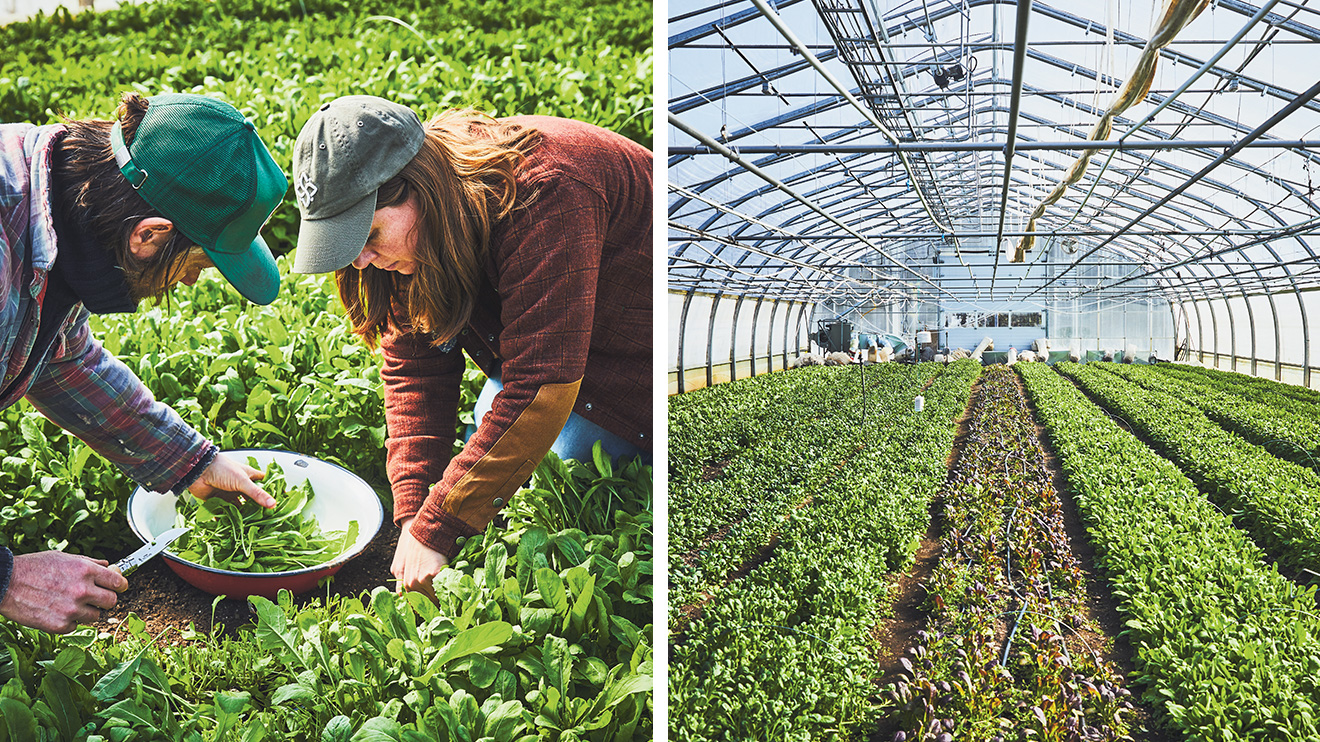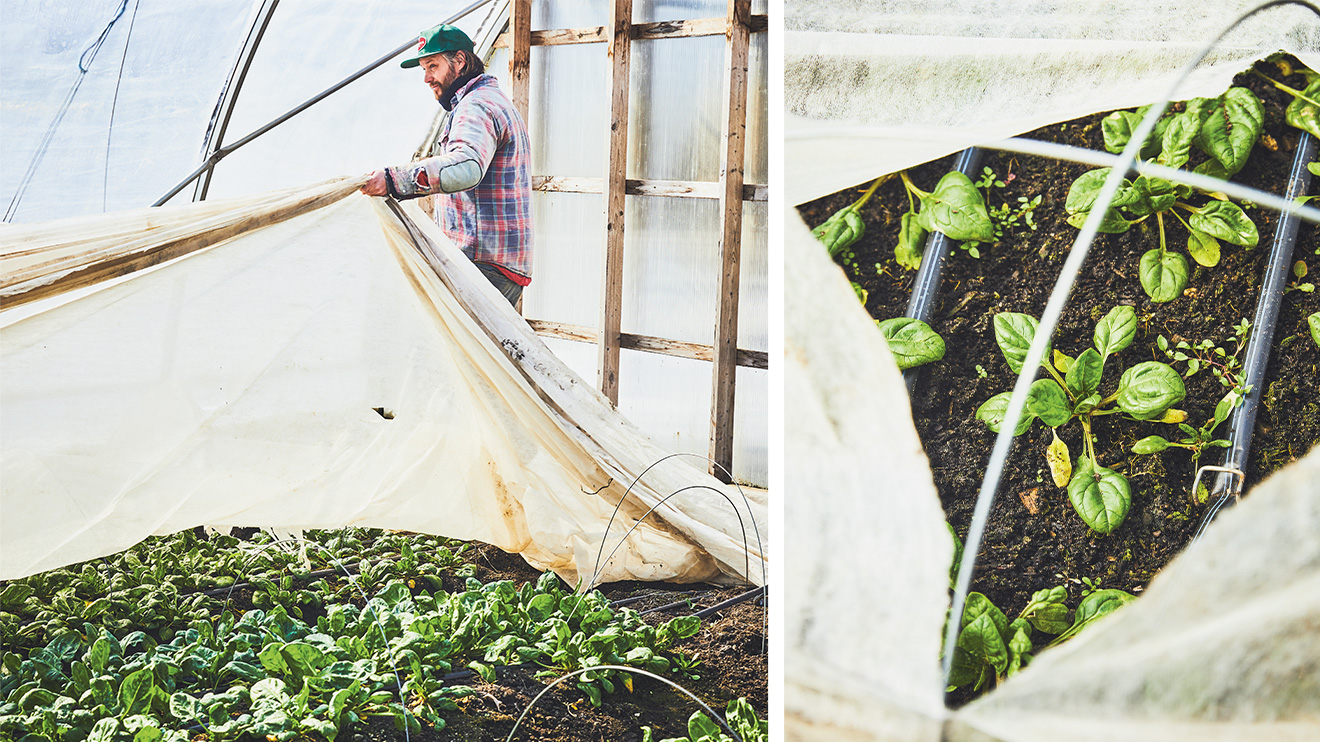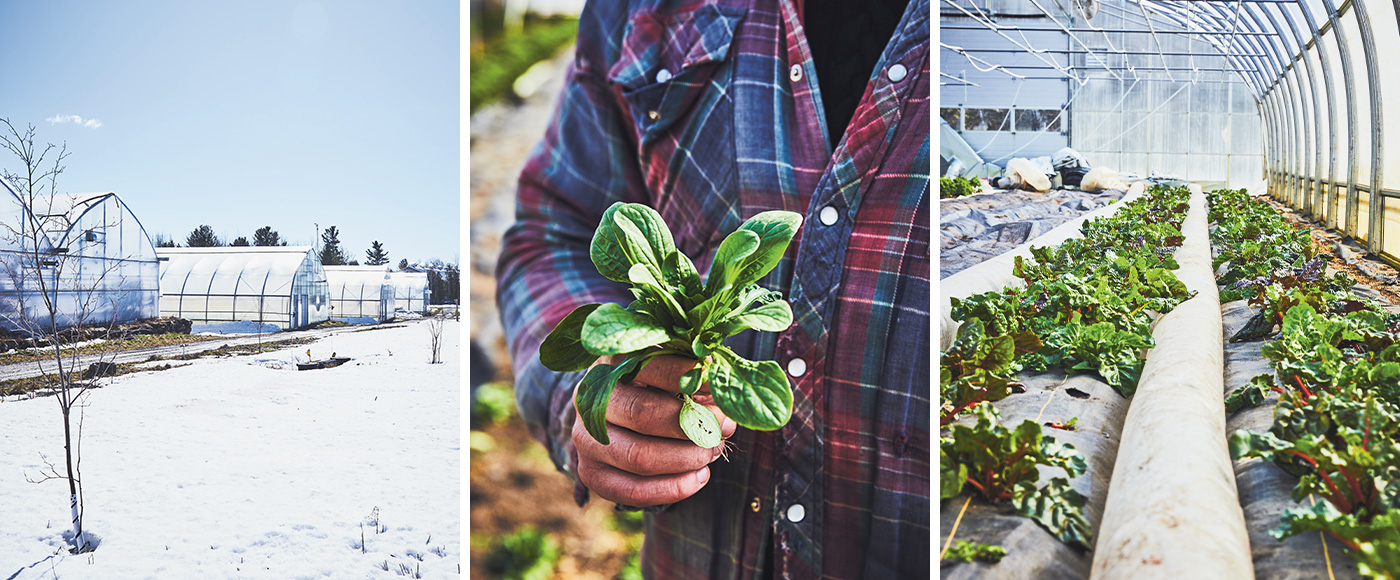Growing below zero
Winter farming has been a project of the farm team for a few years. Through experimentation, they developed methods to achieve their goal, and continue to develop them to this day. They now grow about 30 different vegetables throughout the cold season.
“We want to inspire other market gardeners. Many farmers don’t think that it’s possible to grow produce in the winter. Although some guidelines must be followed, winter agriculture is possible in all regions by adapting the surface of the greenhouses.” — Jean-Martin Fortier, director of vegetable production at Ferme des Quatre-Temps

Heating without electricity
Different techniques are used to keep greenhouses warm in winter without the use of electricity. For example, radiant floors made up of water-filled pipes buried underground are heated by the sun, whose heat is absorbed by the ground.
Home to crops
In small greenhouses called tunnels, very small floating blankets are placed on the crops. They let most of the light through and keep the temperature around the vegetables a little higher. Only one greenhouse is heated with propane, but minimally. They are not trying to reach very high temperatures.

Sowing in the fall
Some vegetables tolerate moderate temperatures, including several greens, such as Swiss chard, arugula, mustard shoots or tatsoi. These vegetables that grow in winter are sown in the fall. Plants go dormant from November to January, when the days are shorter, and growth resumes when the days lengthen in February.
Taste the difference
At this time of year, the taste of vegetables is even more powerful than what we are used to eating; spinach is slightly sweet, arugula is intense and pungent, and the lettuce has a strong vegetable flavour.
“By protecting them from the cold, vegetables develop sugar, and it creates a different taste, specific to Quebec’s winter climate.” — Chloé Trudeau, executive director of Ferme des Quatre-Temps
Improving the local offerings
At Ferme des Quatre-Temps, the goal is not to grow tomatoes or strawberries in the middle of February. “We want to offer a complement to root vegetables that are harvested in the summer and fall, then put in the cellar. The combination of these types of vegetables makes it possible to create a beautiful local offering,” explains Fortier.
Sharing knowledge
Even if this model of winter agriculture is relatively unknown, some farms are getting into it. There is a great openness to sharing knowledge, but don’t expect to see the fruits of these harvests in our supermarkets. “It would take 10,000 farms like ours to supply the large grocery chains,” says Fortier. “On the other hand, it would be possible for a market gardener to connect with a local grocery store and create partnerships.”

